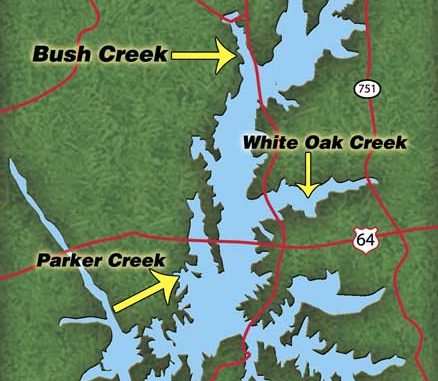
Take a tip from a pro, and set up a spider-rigged boat to catch crappie at Jordan Lake.
While the weather outside may be the coldest of the year, crappie anglers can enjoy some of the year’s hottest action at Jordan Lake.
Writers use many clichés to describe February’s wintry conditions, including references to a well digger’s backside or a witch’s bosom. The bottom line usually is the air temperature frequently hovers below freezing and the water temperature may be in the low 40s.
However, for crappie anglers, there’s always hope. That’s because unlike most freshwater fish, the metabolism of crappie never slows to the point they won’t feed at some point during a day. This high metabolism is what makes crappie a favorite target of fishermen who, in other parts of the country, sometimes must cut through ice to get a bait or lure to them.
Happily, N.C. anglers don’t have to worry about ice augers and portable sleds. Most big waters in the state don’t freeze so much during winter that ice prevents boat launches.
The crappie often may be tough to locate and even more difficult to elicit strikes from without a few tricks. One is knowing some lakes are better winter crappie locations than others. For Tar Heel anglers, Lake Jordan is a hard to beat when it comes to cold-water slabs.
Stokes McClellan is one such person. A veteran crappie tournament angler and BnM poles pro staffer from Huntersville, he’s a 14-time qualifier for the Crappie USA Classic and twice has won Southern Crappie Association Trail events.
His tremendous success has garnered a spot on the Bass Pro Shops pro staff at Concord. McClellan has fished the best crappie waters around the country.
When it comes to early season trolling, Jordan is one of his first choices. Beginning in mid-to-late February, crappie start early movements that eventually lead to their annual spring spawn. This early traveling causes crappie to gather at deep water near the mouths of major creeks and tributaries of most of N.C.’s major lakes.
During this time of year, the coldest water temperatures of the year are often uniform from a lake’s surface to its bottom. That means crappie may be deep as well as shallow. But typically schools of crappie will stage at deep water, waiting for warming trends to move them toward the shoreline and jump start the spawn.
“Jordan is one of the earliest lakes to see these changes“ McClellan said. “The fish seem to go shallow over deep water quicker at Jordan than any other lake in the state.”
Finding shallow fish at open water is what Stokes waits for throughout the winter. Warming trends that comprise several sunny days in a row will draw McClellan out in his 17-foot Ranger 681 boat. The 681 originally was designed as a walleye boat but offers crappie anglers an open floor plan and ample gunwale space to troll multiple crappie rods.
McClellan has outfitted the boat with an array of Driftmaster trolling bars and rod-holders that allow him to space his rods across the transom using 16-foot-long rods at each side. He uses 9-foot rods toward the center line of the boat. The result is as many as 12 rods trolling lures behind the boat.
McClellan uses a Minn Kota 55 Auto Pilot trolling motor to set up flat-line trolling runs. Because he fishes from the rear of the boat, he has a remote unit that controls a bow-mounted motor and can steer the boat or adjust the speed from the transom.
Getting rods into position and boating a fish require some special handling when using a large number of rods. The first rule is the boat never stops, no matter what happens. Deploying rods, fixing hang-ups, catching a crappie on one rod or five crappie on five rods are accomplished with the boat in motion. Otherwise the whole circus would drop to the bottom and every rod would snag.
To deploy the rods, McClellan starts with the interior rods. He casts and sets the distance for each rod before moving to the next one. Casting a bait perpendicular to the moving boat will sweep the bait to the rear and into position while he prepares to put out the next rod.
Boating a fish requires a steady sweeping hookset and constant pressure on the fish to bring a crappie to the surface and away from the boat. Once on the surface, a crappie can be “skied” above the tops of the other lines, although big fish often tangle the lines, regardless of technique.
As impressive as this setup may seem, there’s more to achieving success than just getting launched at a lake and starting to troll. Before McClellan decides on an area to troll, he makes several passes across open water looking for signs of baitfish and crappie using his Lowrance sonar.
Since crappie seldom go deeper than 40- or 50-feet deep, even during the harshest winters, McClellan begins by looking at 40-foot depths at major underwater intersections, such as creek or river channels.
“Primarily I’m looking for baitfish,” he said. “I’ll make a note if I also see crappie. But finding bait and the way the bait is behaving are keys to catching fish.”
In cold water, forage fish that crappie eat (primarily threadfin shad) will stack up at the same locations and gravitate to surface water just a degree or two warmer than surrounding water.
What McClellan looks for are small pods of baitfish rather than a single, layered blanket of baitfish.
“Scattered bait means something has made them nervous“ he said. “If the big rolling schools are broken up, it’s usually because predator fish are feeding on them. When I see this, I note the depth level that has the bigger arches (the signal on a depth-finder that indicates large gamefish). That’s how I know how deep to set up the trolling run.”
For instance, if McClellan’s Lowrance unit displays crappie working forage fish 10-feet deep where it’s 20 or 30 feet to the bottom, he knows those fish are readily catchable.
He starts a trolling run by making favorable use of the wind because he wants to make the longest pull possible through baitfish without having to turn or change directions. While slight turns and even 180-degree swings of the boat are possible, McClelland has discovered the likelihood of tangling lines and losing contact with crappie are greatest when moving in any direction other than a straight line.
In order to achieve the correct depth when trolling, three factors come into play — jig weights, amount of line in the water and boat speed.
With shallow Jordan Lake crappie, McClellan starts with exceptionally light lures. His longest outside rods, the 16 -footers, will pull 1/48-ounce jigheads while the 14-foot rods pull 1/32-ounce jigs, and the interior 12- and 9-foot rods pull 1/16-ounce jigs.
McClellan prefers Bass Pro premium painted jigheads he outfits with Charlie Brewer slider grubs or Culprit tassel tails.
Jordan’s biggest crappie prefer big baits, so McClellan selects lures in the 2- to 3-inch-long range. Color choices should match sunlight penetration and be different colors at the start. He allows crappie to have a wide choice of colors to sample early, then he fishes the color they favor the rest of the day.
The amount of line from a rod to a lure is a major factor in depth placement while line diameter is a lesser factor. McClellan uses Bass Pro Excel monofilament in 4-pound test, which is cast between 80 to 100 feet behind the boat. The light line, long distance and light weights of jigheads, combined with a big trailer, provide a hard-to-resist presentation for crappie.
As for boat speed, McClellan’s auto-pilot setup allows for variable speeds. He measures his boat’s speed in increments of 1/10 mile per hour, using a built-in GPS unit.
His typical trolling range is 1.1 or 1.2 mph. McClellan occasionally will go faster if crappie are holding just below the surface during warm, sunny days. Then he may achieve speeds of 1.7 to 1.9 mph. But McClellan never goes slower than 7/10 mph because the grubtails on the jig heads won’t have enough action, and lures will be pulled unnaturally through the water.
McClellan said a 1/32-ounce jig pulled 100 feet behind the boat by 4-pound-test line while cruising at 1 mph will swim about 10-feet deep. Accomplishing proper lure trolling depths takes experience and practice. When he tinkers with his setup, McClellan’s first adjustment will be boat speed, then jig weight, then line distance.
McClellan said Bush Creek adjacent to Farrington Point is one of his favorite Jordan Lake crappie spots. It’s easily accessible from a Wildlife Commission boat ramp off State Road 1008 at the west side of the lake. The area contains a large spawning flat in the back of the creek and standing vegetation that’s ideal spawning habitat.
It’s important to recognize that while spawning isn’t a consideration during February and into early March, crappie will stage at mouths of areas they later will use for spawning.
A good tip when checking a new area is first to fish the back of a spawning creek, then move toward the creek’s mouth, looking for crappie knocking on the door.
McClellan also favors Parker’s Creek at the west side of Jordan Lake south of Farrington Point. The creek has of submerged timber near the center of the creek and is a magnet for early-season slabs.
An ideal pull is to start at the mouth of the creek and work toward the forks at the back of the creek where two defined spawning flats are located. During February, the presence of baitfish will determine crappie concentrations.
White Oak Creek, across the lake from Parker’s Creek, is another good crappie area, especially during warming trends later in the month and during March. The rear section of the creek is a shallow, ½-mile spawning flat accessed after passing underneath the bridge that defines the creek entrance. Parker’s and White Oak creeks are within easy reach of the Farrington ramp.
Anglers planning a trip for early-season Jordan crappie fishing would do well to check the prevailing lake level, posted by the U.S. Army Corps of Engineers (919-542-4501, press 1or try the web site at http://epec1.saw.usace.army.mil/JordanPage/jordmain.htm) or call the N.C. State Parks and Recreation Ranger Station (919-362-0586).
Water levels fluctuate pretty frequently at Jordan and with the recent drought conditions at much of the Southeast, it’s a good idea to plan ahead and perhaps find an alternate boat ramp or two in the event that access from a targeted ramp isn’t available because of low water.
The WRC has a 10-inch minimum-size limit for crappie at B. Everett Jordan Reservoir. This limit, combined with the state aggregate daily creel limit (20 crappie), has increased the number of large fish in the lake, McClellan said.
“We’ve seen a tremendous increase in the number of crappie over 2 pounds being weighed in at the Southern Crappie Association tournaments,” he said.

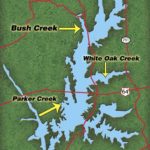
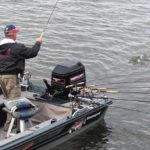
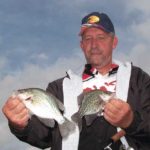
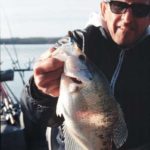
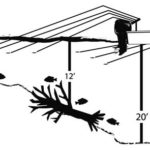
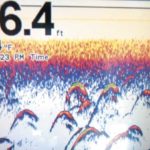
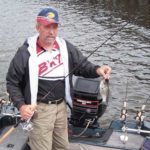
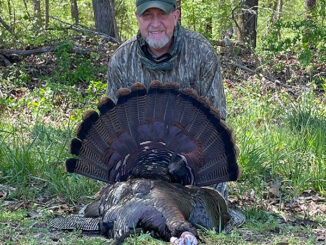
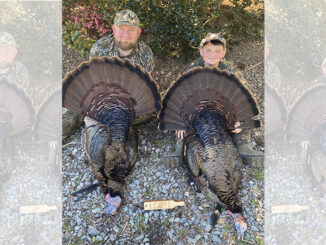
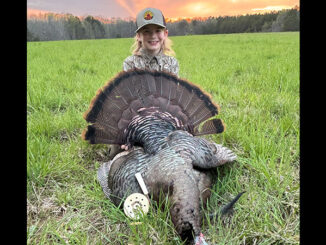

Be the first to comment